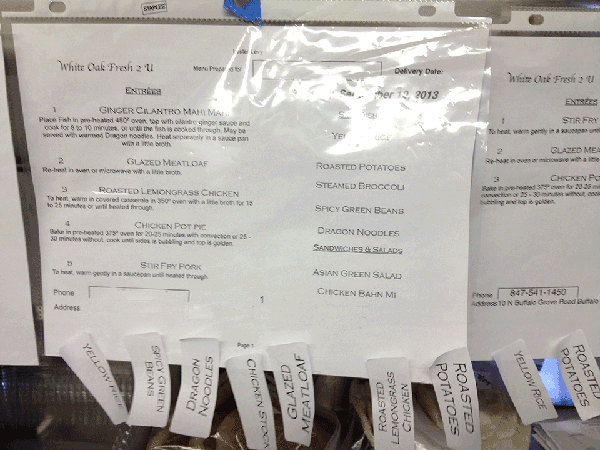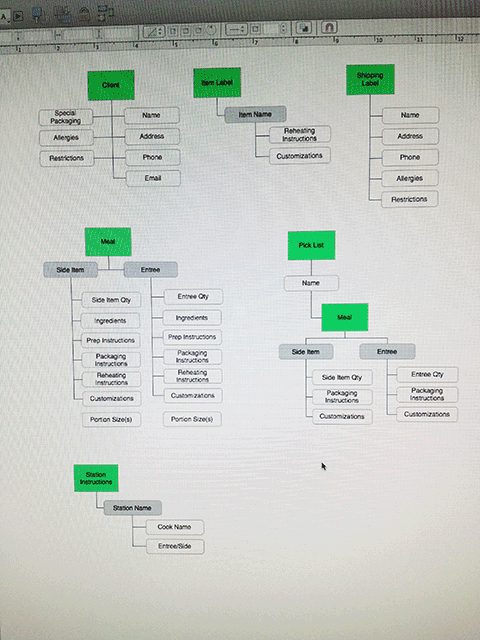Since we had verified that this as a valid and potentially successful project for all parties, it was time to begin the discovery process. I had previously helped Tom set up his Shopify site, so I was familiar with his product line-up.
White Oak Fresh 2 U Product description:
- 8 distinct menus consisting of 7-8 items each
- Each menu based around a culinary theme and his extensive recipe library
- Each menu is influenced by ingredients that are local and in season
What I was missing how it actually all came together and ended up in his clients’ kitchens. Who did what, and how did they do it?
Step one: Get over to his kitchen on a production day and see how the sausage was made (no sausage was on the menu today).
We found a day that worked for everybody and his staff all took a few minutes out of their busy afternoon to walk me through:
- What they do
- How they do it
- What works well about the current method
- What they wished worked better

The wish list was relatively short, because nobody wanted to be seen as just complaining. They are a tight-knit group and have worked their collective asses off to get to where they are. Their system might not be the most elegant, but with lots of double-checking and teamwork they manage to turn out a fantastic array of dishes every week for their grateful clients. I didn’t expect much from the wish list because they only know what they have seen. They go to bed thinking about jasmine rice and portabella mushrooms, not form label positions and order taxonomies.
In typical interview fashion, I heard expected things and unexpected things. Something I had not thought of was the mindset of the cooks working on Tom’s team. They are all highly trained and can think on the fly. Each one had created little notes to help them with each service, and most of them consulted with Tom before service to tweak and polish the menu based upon available ingredients, and the general makeup of the week’s orders. Whatever came out of this system needed to solidly augment what they were doing without taking away all of the opportunity for the personal investment they were all putting into their dishes.
Between the observation and the recorded interviews (yeah Evernote!) I have a good foundation to start mapping out all the data ingress and egress. Next, I will map that out and review with my developer to start building a base feature list. I feel like the big challenge will be keeping V1 from scope creep and dragging out the timeline.
There is just sooooo much UXing to do!


